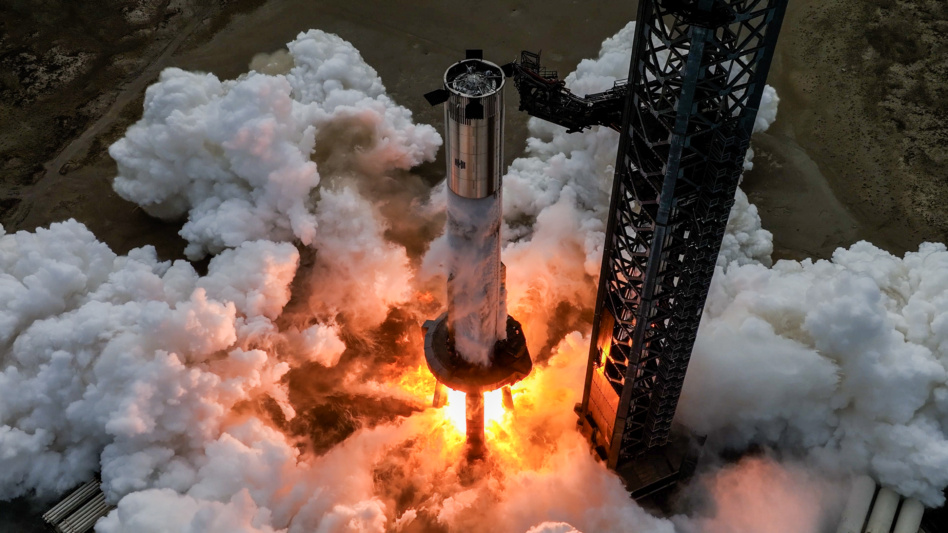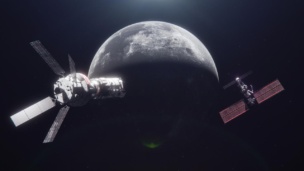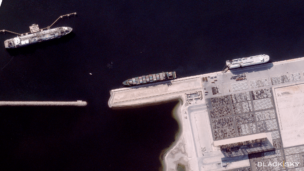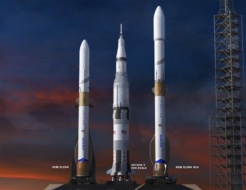2024 was a record-breaking year for the global space industry. More launches from more spaceports brought more satellites into orbit, and 2025 is expected to be no different.
Here’s a look at some of the highlights we can expect to see in the upcoming year:
Moonward bound: This month, ispace’s RESILIENCE lunar lander and Firefly’s Blue Ghost Mission 1 are expected to hitch a ride together aboard a Falcon 9. Both landers are aiming to land on the lunar surface in mid-2025.
Intuitive Machines’ IM-2 mission is also expected to launch in Q1, bringing NASA’s PRIME-1 (Polar Resources Ice Mining Experiment-1) to the Moon’s south pole region to drill baby drill.
Later in the year, Astrobotic’s Griffin lander is expected to bring payloads from NASA and ESA to the lunar south pole (though without the now-canceled VIPER onboard).
Maiden voyages: Multiple new rockets are expected to take their first steps off the pad this year.
- Rocket Lab is working toward launching the first test flight of its Neutron rocket.
- Stoke Space is planning to launch its Nova rocket from the Cape.
- MaiaSpace, a subsidiary of ArianeSpace, is expecting to launch its Maia rocket from French Guiana.
- Orbex will bring its Prime rocket to SaxaVord for a potential first launch.
- Skyrora, which has suffered years of regulatory delays, is expecting to launch the first suborbital flight of its Skyrora L vehicle in the spring.
- RFA One pushed its maiden flight to 2025 after its first stage blew up on the launch pad in August.
- bluShift Aerospace plans to launch the first suborbital flight of its Starless Rogue rocket by the end of the year.
- China is expected to debut multiple new launchers, including OrienSpace’s Gravity-2, CAS’ Kinetica-2, LandSpace’s Zhuque-3, and Galactic Energy’s Pallas-1.
Bums in seats: The world has prepared a number of crewed flights in the coming year.
- NASA’s SpaceX Crew 10 mission to the ISS—which will finally bring Butch Wilmore and Suni Williams home after a 10+ month stay in space—has been delayed to NET March.
- Axiom Space expects to fly its fourth mission to the ISS, bringing astronauts from India, Poland, and Hungary to the orbital lab as early as the spring.
- SpaceX’s Fram2 mission, the first in history to fly astronauts over the poles, is targeting a launch NET 2025.
- India has tentatively scheduled the first flight test of its human-rated launch vehicle for February. If successful, this uncrewed flight will open the door for crewed Gaganyaan missions later in the year.
Flying high: Rockets and satellites aren’t the only spacecraft expected to be soaring around in orbit this year.
- Sierra Space’s long-awaited Dream Chaser is now targeting its first flight to the ISS in 2025, launching aboard ULA’s Vulcan rocket.
- Beijing-based Space Transportation is planning to fly the first test flight of its near-space reusable spaceplane prototype, Cuantianhou.
- Vast plans to launch its commercial space station, Haven-1, this year in the hopes of becoming the first private space station on orbit.
Traffic report: This year, a few constellations will earn their “mega” moniker. SpaceX is expected to continue increasing the number of Starlink satellites, launching on one of the 180 Falcon 9 launches projected this year, or on Starship, which could fly its seventh test flight in January.
Multiple flights to build Amazon’s Kuiper constellation and the SDA’s PWSA are also scheduled throughout the year.
Close relations: 2024 gave us some initial tests of on-orbit RPO capabilities, but 2025 will see spacecraft demonstrate even more advanced dynamic maneuvers.
As part of the military’s VICTUS HAZE mission, Rocket Lab and Firefly will launch spacecraft on short notice sometime in 2025. Once in orbit, Rocket Lab’s spacecraft will interact with True Anomaly’s Jackal (launched with Firefly’s Alpha rocket) to demonstrate their RPO capabilities.
Orbit Fab also plans to start offering in-space refueling services, for both Space Force satellites and commercial sats in GEO.
Government shakeups: While it’s too early to be sure what President Trump has planned for space, experts agree that the administration is likely to prioritize America’s return to the Moon, national security space capabilities, and partnerships with the commercial sector. Advocates are also pushing for the government to continue cutting burdensome regulations on the commercial space sector, including the FAA’s reconsideration of its Part 450 licensing regime.
While there is expected to be a lot that’s new in 2025, we’ll also get one blast from the past: Trump has signaled his intention to relocate Space Command HQ to Alabama, reopening the fierce debate about where the Colorado-based command calls home.
Correction: A previous version of this story incorrectly stated the company launching the Nova rocket. It is Stoke Space.



